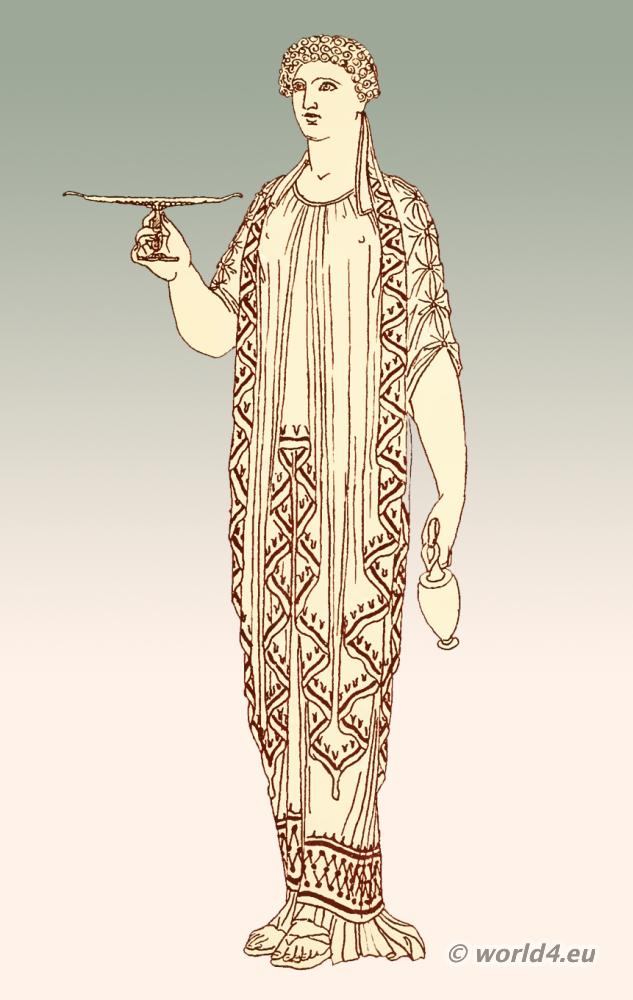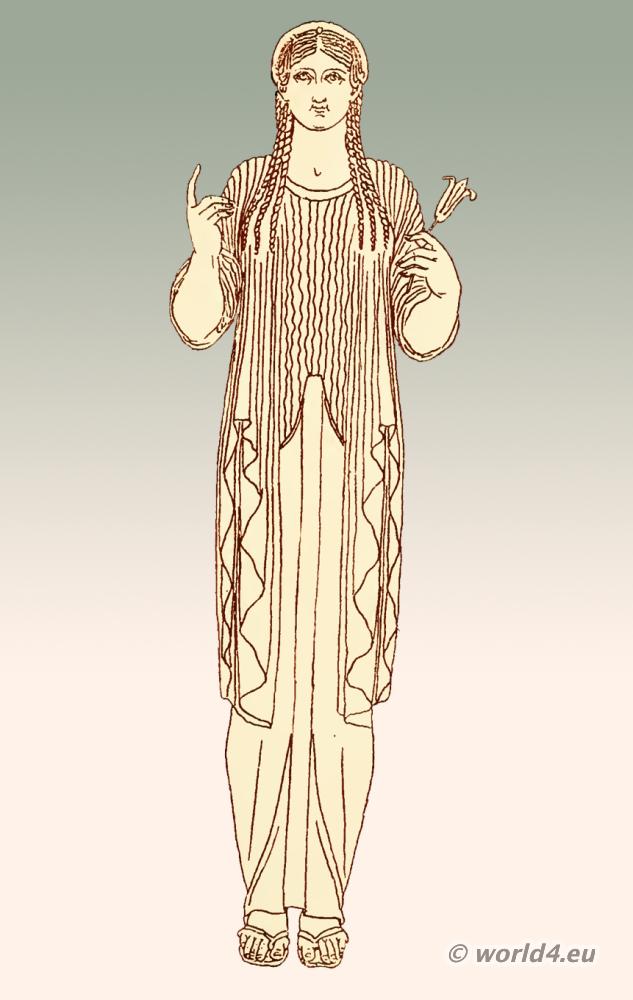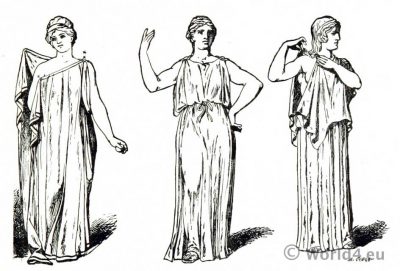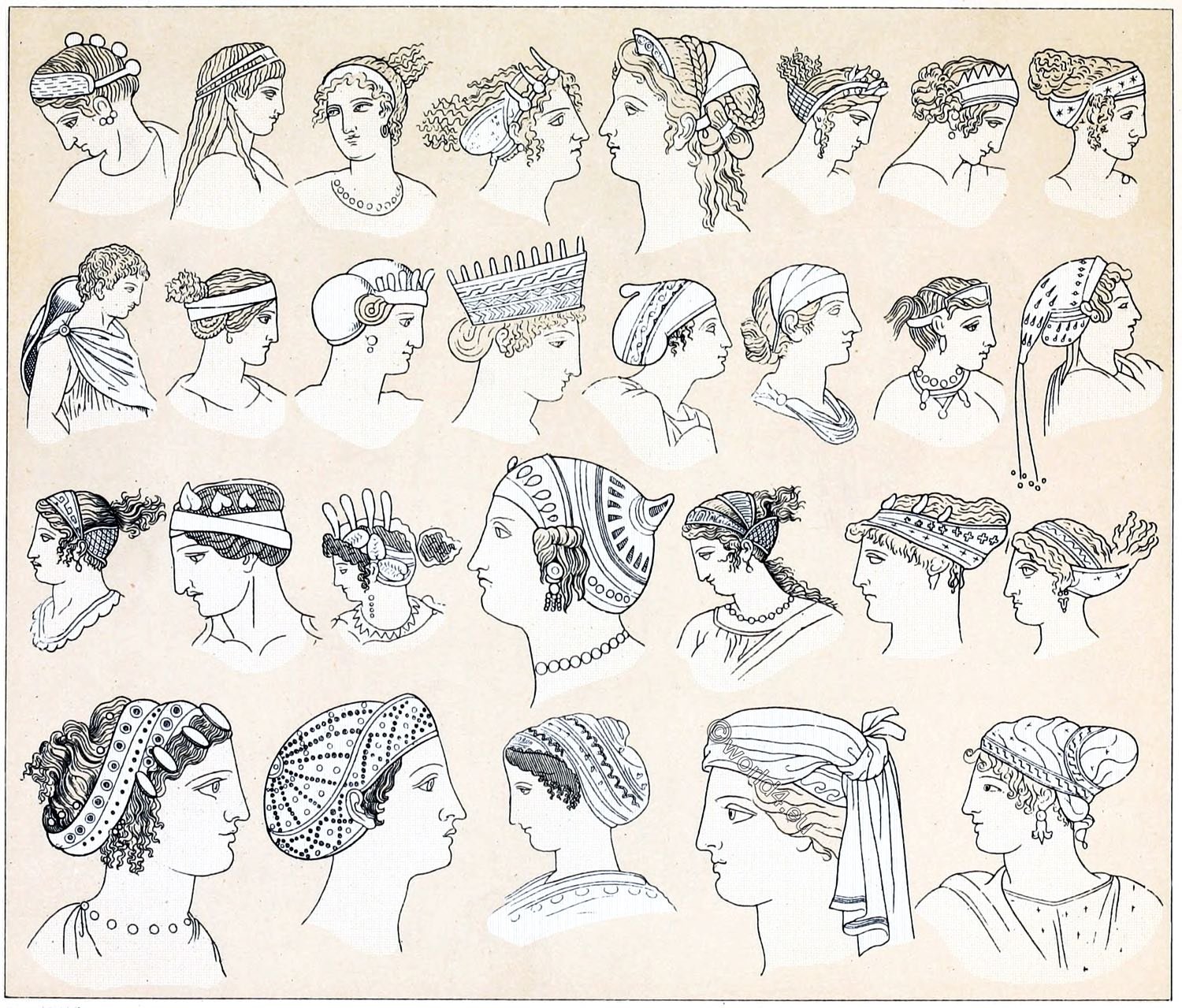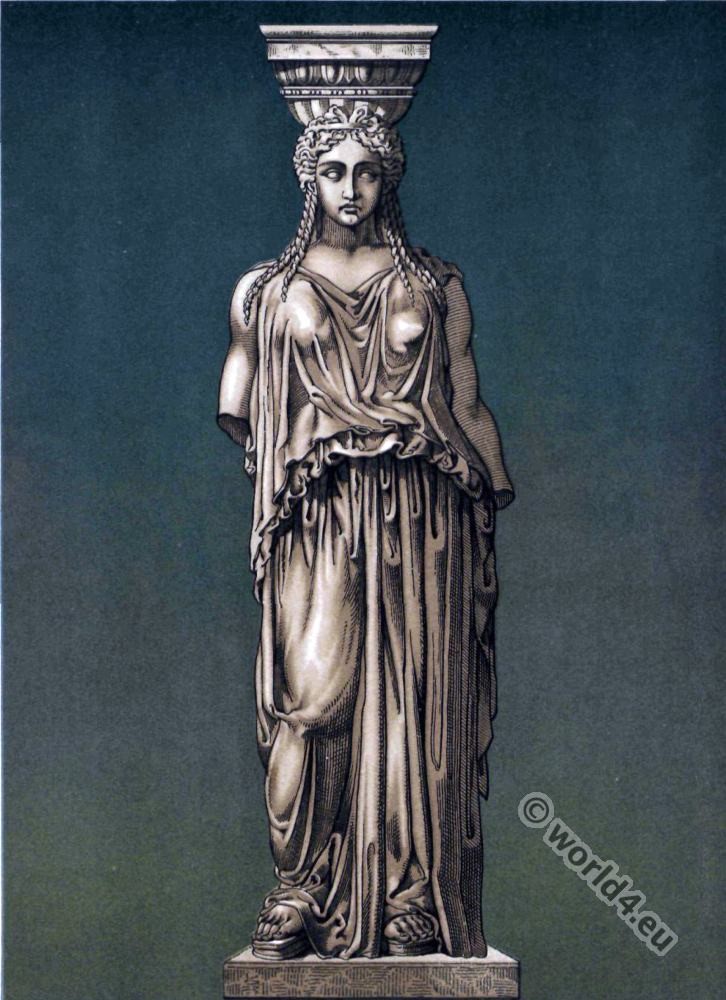
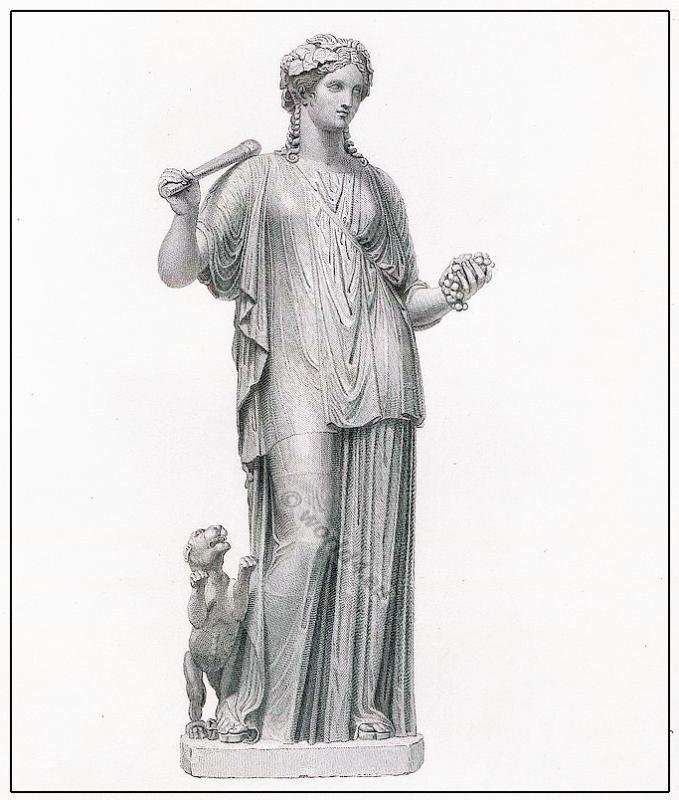
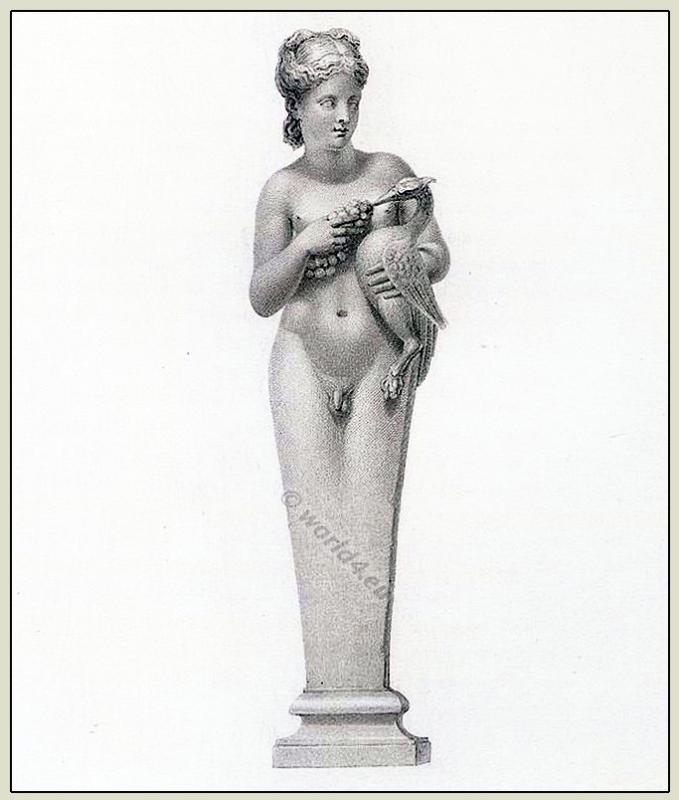

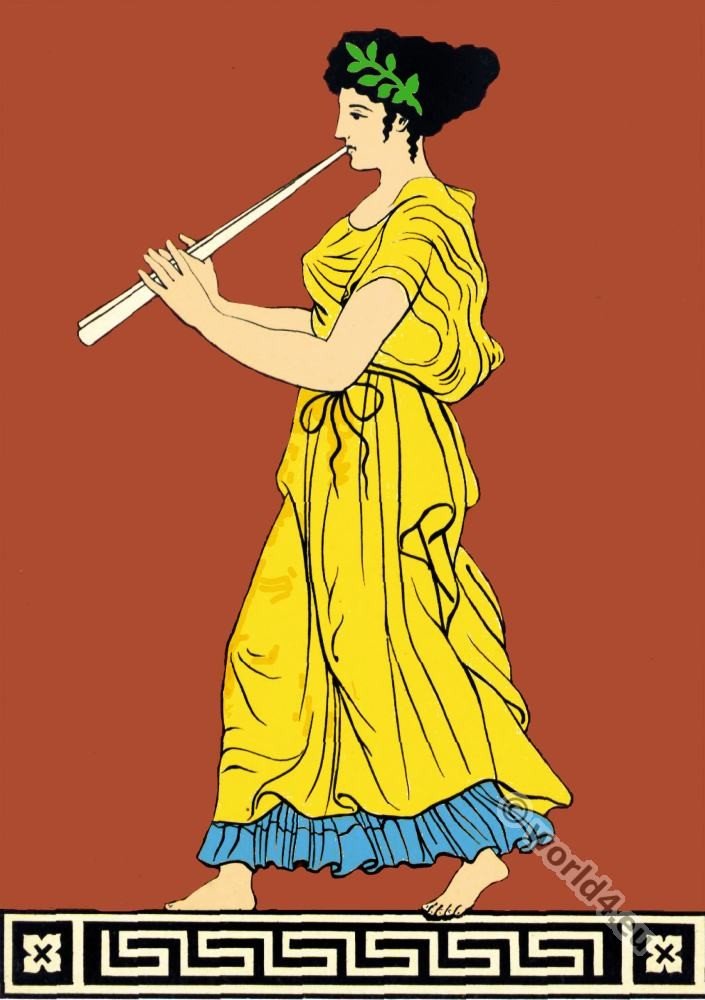
The Tunic or Chiton
The principal vestment both of men and of women, that which was worn next the skin, and which, consequently, whenever more than one different garment were worn one over the other, was undermost, bore in Greek the name of χίτων; in Latin that of tunica. It was of a light tissue; in earliest times made of wool, in later periods of flax, and last of all, of flax mixed with silk, or even of pure silk. Its body was in general composed of two square pieces sewed together on the sides.
Sometimes it remained sleeveless, only offered openings for the bare arms to pass through, and was confined over the shoulders by means of clasps or buttons; at other times it had very long and wide sleeves; and these were not infrequently, as in the figures of Minerva and of the bearded Bacchus, gathered up under the arm-pits, so as still to leave the arms in a great measure bare.
Most usually however the body of the tunic branched out into a pair of tight sleeves reaching to near the elbow, which in the most, ancient dresses were close, with a broad stiff band running down the seams, and in more modern habiliments open in their whole length, and only confined by means of small buttons carried down tile arms, and placed so near the edge of the stuff as in their intervals to show the skin.
In very richly embroidered tunics the sleeves sometimes descended to the wrists; in others they hardly reached half way down the upper arm.
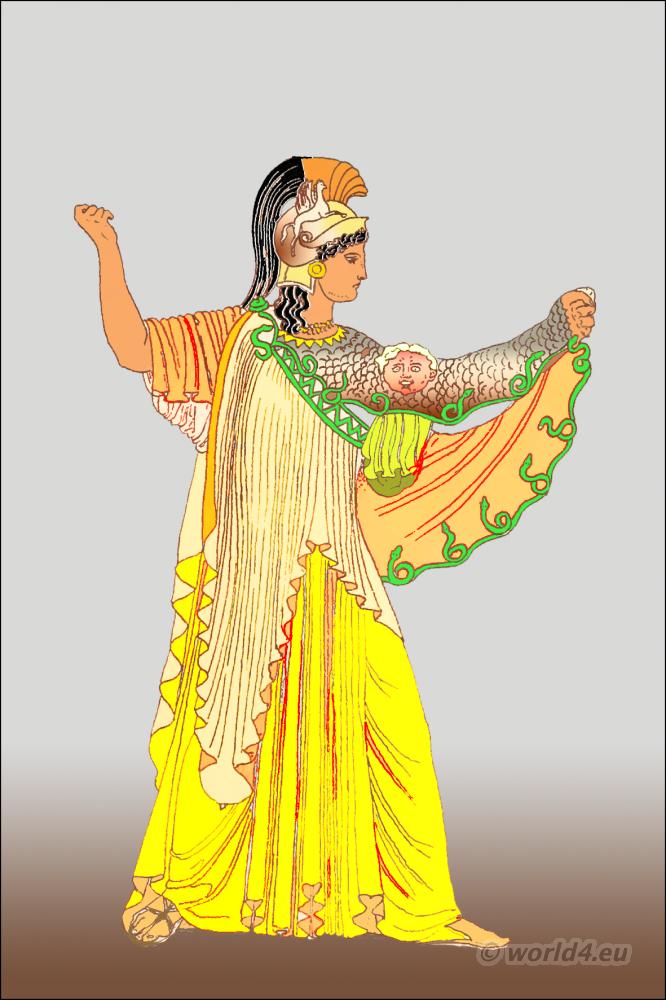
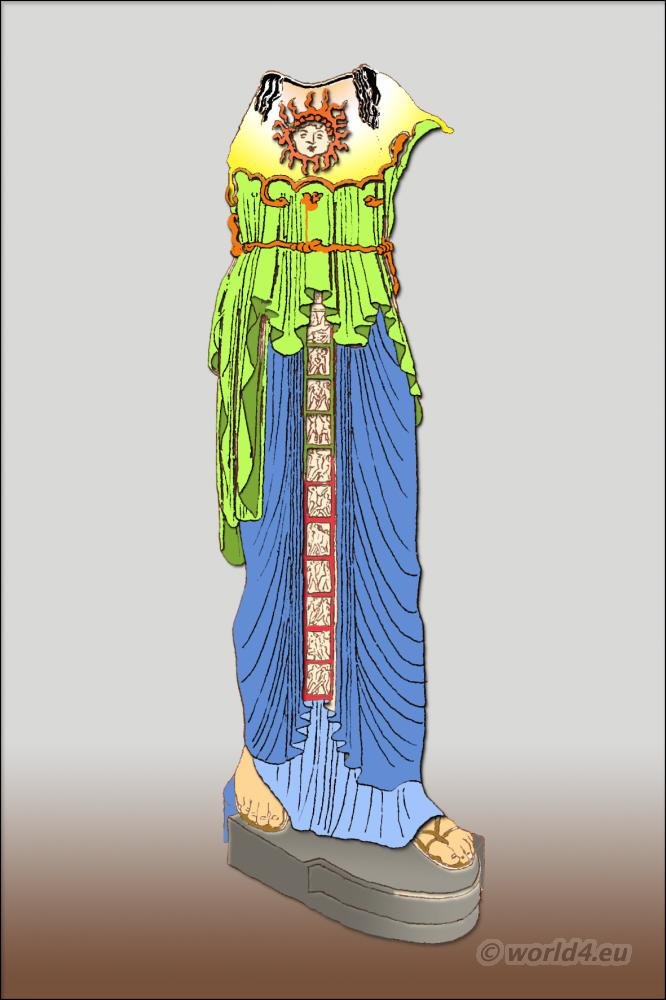
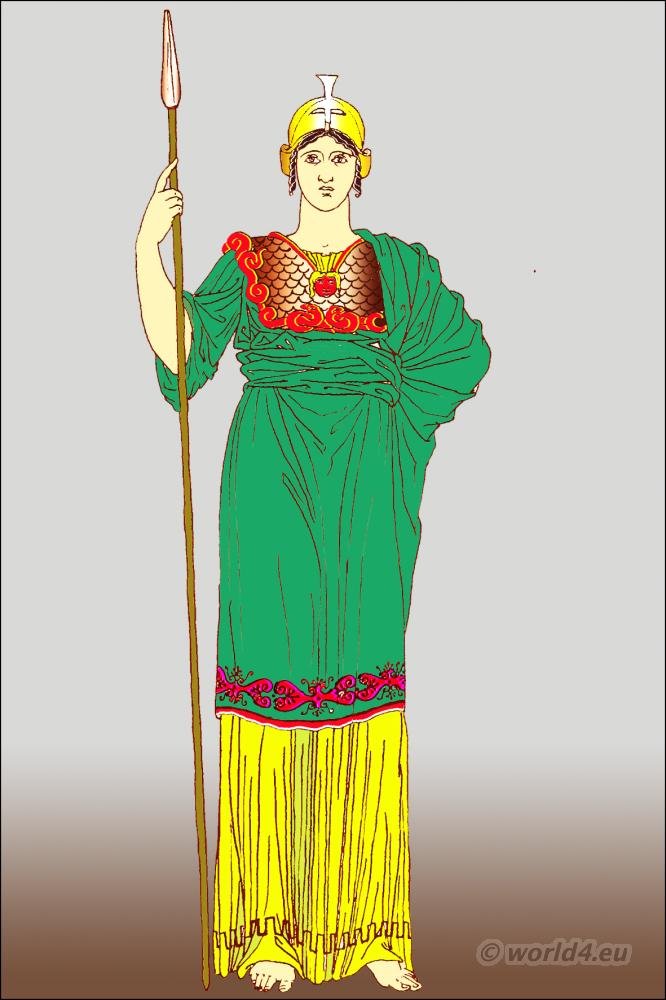

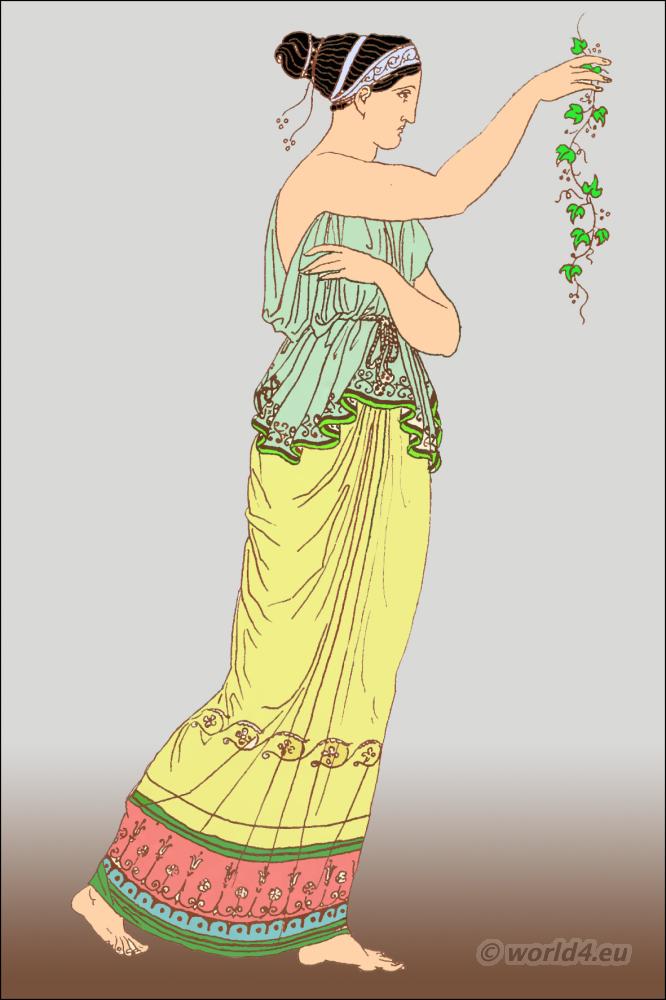
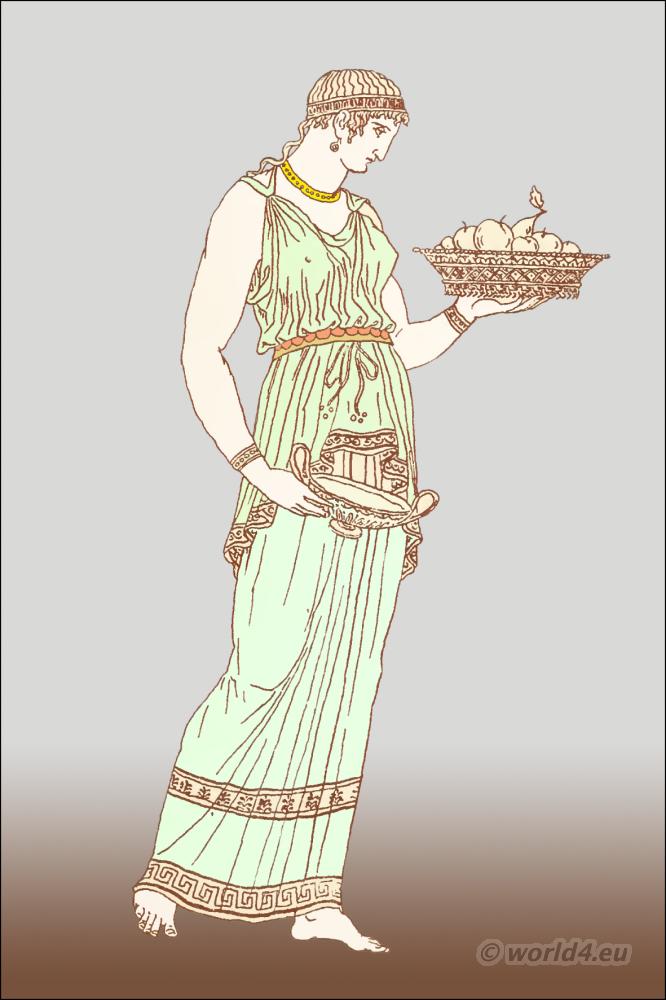
The tunic was worn by females either quite loose, or confined by a girdle: and this girdle was either drawn tight round the waist, or loosely slung round the loins.
Often, when the tunic was very long, and would otherwise have entangled the feet, it was drawn over the girdle in such a way as to conceal the latter entirely underneath its folds.
It is not uncommon to see two girdles of different widths worn together, the one very high up, and the other very low down, so as to form between the two in the tunic a puckered interval; but this fashion was only applied to short tunics by Diana, by the wood nymphs, and by other females fond of the chase, the foot race, and such other martial exercises as were incompatible with long petticoats.
Among the male part of the Greek nation, those who, like philosophers, affected great austerity, abstained entirely from wearing the tunic, and contented themselves with throwing over their naked body a simple cloak or mantle; and even those less austere personages who indulged in the luxury of the tunic, wore it shorter than the Asiatic males, or than their own women,and almost always confined by a girdle.
From Greek vases and paintings we learn that the tunic often was adorned with sprigs, spots, stars, &c., worked in the ground of the stuff; and rich scrolls, meanders, &c., carried round its edges; and this tunic was frequently, as well out of doors as within, worn without any other more external garment. In mourning, when the Grecian ladies cut their hair close to the head, they wore the tunic black.
Over this tunic or under garment, which was made to reach the whole length of the body down to the feet, Grecian females generally, though not always, wore a second and more external garment, only intended to afford an additional covering or protection to the upper half of the person.
This species of bib seems to have been composed of a square piece of stuff, in form like our shawls or scarfs, folded double, so as to be apparently reduced to half its original width, and was worn with the doubled part upwards, and the edge or border downwards next the zone or girdle. It was suspended round the chest and back, in such a way that its centre came under the left arm, and its two ends hung down loose under the right arm; and according as the piece was square or oblong, these ends either only reached to the hips, or descended to the ankles.
The whole was secured by means of two clasps or buttons, which fastened together the fore and hind part over each shoulder.
In later times this bib, from a square piece of stuff doubled, seems to have become a mere single narrow slip, only hanging down a very short way over the breasts; and allowing the girdle, even when fixed as high as possible, to appear underneath.(1)*
